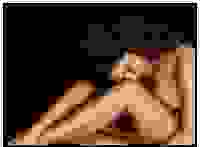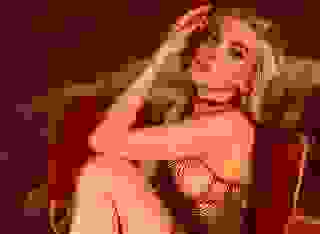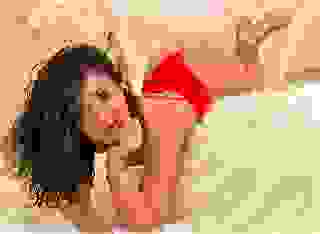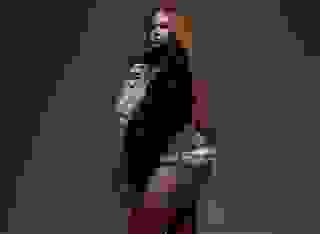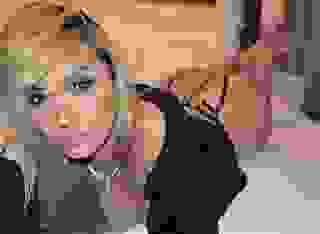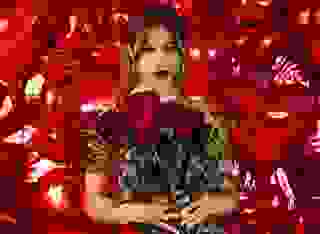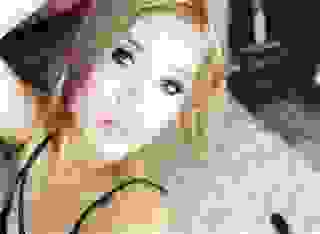- Sci-Fi & Fantasy
- All That Glitters - Notes
Note: You can change font size, font face, and turn on dark mode by clicking the "A" icon tab in the Story Info Box.
You can temporarily switch back to a Classic Literotica® experience during our ongoing public Beta testing. Please consider leaving feedback on issues you experience or suggest improvements.
Click hereAll That Glitters: Notes v 14
The 'Notes' chapter is a reference chapter on the 'All That Glitters' series. This is the fourteenth iteration of this chapter and covers information from chapter one to chapter sixty-four.
Unfortunately, since the Notes chapter is upgraded based on the latest chapter of 'All That Glitters', if you are using this ref while reading an earlier chapter of Glitters, you might run afoul of spoiler material. You have been warned...
Readers have complained that this chapter is difficult to move around in within the Literotica system. This is true. If you want to get the best use out of this chapter, simply import it into a word program of your choice and use the find option or other navigation features to explore the articles in this chapter.
© bigtddybr April 2024. This series 'All That glitters' cannot be transferred to any other site besides Literotica.com without the prior authorizations in writing from the author and bigtddybr must be credited for this work.
You will find information in Notes in four distinct tiers:
First Tier: is general information on the history, technology, and direction of the series (not fully fleshed out as much of that history is yet to come in the series and is being added to in each successive chapter).
Second Tier: a listing of who is who based on the planet/location/ship for which they are associated, starting with Terra as the base, then going to Liramor-23, and then in alphabetical order by planet/location/ship name (i.e. Planet Anuura would come before Green's World, numbered systems will be based on their classification system [i.e. DG-117873 before HD-115153). Characters can appear in more than one location due to the fact that they might be associated with a planet, a location, and/or a ship. The same is true of ship names. Spoiler material for early chapter readers.
Included in this Tier is series historical and cultural information linked by planet, race, or culture.
Third Tier: a listing of incidental information that might be of use to the reader i.e. common abbreviations used in the series, the Phonetic alphabet, the list of ships involved in the order in which they are seen in the series.
Fourth Tier: an alphabetical list of characters. Spoiler material for early chapter readers.
NOTE: Some minor characters that might be seen in Second Tier listings, are not included in the Fourth Tier lists due principally to their rather fleeting nature in the series e.g. Fontaine, Peter who only appears under the Liramor Prime listings.
FIRST TIER
History
Series starts in year 2482.
Jump Drive FTL (Taster Than Light) technology was created in 2359. The next 100 years are known collectively as the Great Expansion. There were six known planets in the Terran Sphere prior to the great expansion, they form the six original colony planets of the Union. The Union Flag shows the stars for the six original planets around the large star of Terra centered on a field of blue. All are within 30ly (light years) of Terra. The occupation of the original six planets was totally funded by Terra and was completed in the year 2164, pre-jump drive. With one exception, no new planets are added until the Great Expansion.
The exception is Hollander's World, which was funded by Éire Nua (New Ireland). Hollander's World is 30ly from Éire Nua but is on a tangent from Terra, placing it 60ly from humanity's home star. Hollander's World was colonized in 2218 but comms was lost with the colony ship on route and the fact that Hollander's World was colonized by humans was not discovered until 2362, three years after the creation of the Jump Drive.
In 2485, humans encounter the Asocans and are introduced to Jump-grid FTL technology which have much longer jump capability than the vane system used by humans. Humans slowly begin to convert all their vessels over to this new technology with all new ships being built with it and all ships doing refit being upgraded to as an option, which most ship owners take.
With one exception, Human drift is 150ly radius from Terra as of 2482, at the start of this series. The one exception is Planet Adenomere, part of the Alliance of Planets, which is 182 light years from Terra. There are 160 known star systems within the human sphere with 63 known human habitable planets in human space, 48 full member planets with the Terran Union each with more than two billion inhabitants, the more mature worlds have six billion+ inhabitants. There is one partial member colony world (Hadrian's World which is also the furthest Union planet from Terra) with slightly more than one billion inhabitants, 6 colony worlds associated with the Terran Union that have yet to accede five hundred million inhabitants and 6 planets that have not opted into the Union due to differences in politics, notably the inclusion of slavery which the Union abhors. These six planets are collectively known and referred to as the Alliance of Free Planets.
The two remaining planets have not as yet been colonized by humans and will likely not be as they have been discovered to be the home planets of the Pod-Drran (Pod-Saar, in the Sharanas System), and of the Maha-Rrin (Maha-Oran). The Maha-Rrin have not named their star system, thus it is simply named the Maha-Rrin system.
Many Union planets still harbour Anti-Union organizations that want their respective planet to secede from the union, especially those planets that once made up the Confederation of Planets, the planets that lost the Terran Unification War. While minor in numbers, the Anti-Union groups tend to be very vocal, and often dangerous.
Health Health in the 2482 is quite advanced, with cures for most diseases available to all with exceptions to those who might be allergic to some of the treatments. This means that humans can live to between 150-200 years, sometimes longer. Humans will remain in relative health as they age until the last twenty to thirty years of their lives, when their bodies will begin to significantly deteriorate. Most humans will retire from work life between 100 and 120 years, though they will remain active in some pursuits until they begin to decline.
Because of their long lifespan, humans could quickly strip most planets of their ability to support their ever growing populations. For this reason, on most planets, contraception was mandatory and normal took the form of implants for both males and females. The most popular form of contraception is the Mideral Contraceptive Implant, which is tailored for both men and women. It is a subcutaneous implant that lasts a little more than five years but is replaced every five years.
Human medicine now has the ability to regenerate limbs and other parts of their bodies as replacement parts, known as medical recovery of missing limbs and organ replacement. If a new liver is needed, cells are taken from the patient and a liver is generated, ready for transplant within two months. As the cells were originally part of the host body, there is usually no rejection factor, though in the odd case this does occur.
Terran Unification War Lasted 23 years from 2449 - 2472. Fifteen planets of Confederation of Planets (CP), under Emperor Charles Charlamagne I, went to war against fourteen planets of the Union of Planets (UP) at the start of the war (which later became known as the Terran Union at the end of the war). Thirty-two planets remained 'neutral' but in fact supported one side or the other. Many, such as New Hadria, supported both sides making a fortune during the war. Six of the neutral planets formed the Alliance of Planets, the only other group of planets that allowed slavery.
The CP had the larger and better Navy when the war started. Initially, the UP was on the back foot and didn't do so well, however, they began to develop their navy, creating new and much better ships to fight against the CP, and creating tactics to make use of the newer ships.
Twenty-three of the neutral planets joined the Union of planets after the attack on New Anglia in 2466, when six Confederation of Planets ships sent C-charged rocks against six of the largest cities on New Anglia. The devastation was total and the loss of life enormous. The Confederation then attacked four neutral mining platforms with atomics, destroying them completely. This caused twenty-three of the neutral planets to join the Union cause. The defeat of the Confederation was inevitable after this change.
The Alliance of Planets A group of six planets initially settled by interplanetary pirates. They include: Planet Adenomere, Erden's World, Gaetan's Planet, New Hadria, Planet Surdend, and Vuelta. These planets are the only six planets in the human sphere that still allow slavery after the defeat of the Confederation of Planets. Many of the Alliance planets purchased slaves from pirate syndicates, who are often sponsored by the larger Great Houses in the Alliance.
The Alliance of Planets did not side with one side or the other during the Terran Unification War, however, their sympathies were with the Confederation of Planets as the Alliance, too, allowed slavery. Some of the Great Houses of the Alliance Planets profited heavily from the war while supplying the Confederation of planets. A few, such as House Handren, profited by supplying both sides of the war even if their sympathies were with the Confederation.
The Alliance money is called the Alliance Pound. It trades at roughly 89% of the Union Credit, though that can fluctuate on a weekly basis.
The individual planets of the Alliance are run by the largest of the Great Houses on each of the planets, who control the presidency of their respective planets. For Alliance political issues, the Great and Lesser Houses historically come together in a group known as 'The Landstradt', run by an elected Chairman. The number of Great Houses in the Landstradt changes constantly according to the wealth and power wielded by each of the houses and currently consists of 38 of the 158 Houses of the Alliance, the remainder are referred to as the Lesser Houses.
The Great Houses dominate the Landstradt, so much so that it takes two-to-one margin of the Lesser Houses to overturn a vote by the Great Houses. Because of this, the Lesser Houses have chosen not to frequent the Landstradt in later years.
Due to the lack of participation in the Landstradt, this group of thirty-eight Great Houses dictated policy for the Alliance as a whole. The Greater Houses decisions could be overturned by seventy-six of the Lesser Houses but in reality, this seldom happened as the Landstradt historically has had difficulty meeting a quorum from either the Greater or Lesser Houses. Only three times in the past did the full Landstradt sit.
By original definition, a Great House is a house that holds more than one billion AP in assets, as confirmed by the banks. A Lesser House is one that has one hundred million in assets. However, after the Great Raid by the Union, the fundamental aspect of the Landstradt needed to be changed to allow for a more equitable system of political participation and control.
At the beginning of 2487, after the Great Raid by the Union the year before, the status of Great Houses changed to include all members of the Landstradt, thus giving a one House one vote privilege to the members of the Landstradt. This was done to rest control of the Landstradt from the former Great Houses who were using the Landstradt to their own ends, often to the detriment of the Alliance as a whole.
After the Great Raid against the Alliance, the definition of a Great House was changed to a house that has two hundred and fifty million in assets. All current Lesser House members of the Landstradt, that did not meet this new definition, were grandfathered into the Landstradt as a Great Houses until such time as they met the new criteria or they fell below the existing standard (100 million) of a Lesser House. This effectively elevated all the Lesser Houses to Great House status in the Landstradt, ending the monopoly of rule of the original Great Houses, ensuring that the Landstradt would be able to meet a quorum in future sittings and giving rise to the desire of the former Lesser Houses to attend the Landstradt in future.
Interspecies Community also The Greater Community
The Interspecies Community, often referred to as the Greater Community, is a group of intelligent species that work together to solve mutual problems. The community was started when the Djinaëte (originally known to humans as the Insectoids) landed on the Asocan home world some 1800 years ago. The two species formed a mutual bond that allowed them to explore nearby space, in which they discovered other intelligent species. Since the Asocans developed the FTL drive and the Djinaëte provided the power source for the drive, Djinaëte ships have been the prime mover for all of the Interspecies Community, which left most species realms as principally contiguous species worlds (single species). While there are small pockets of other species on some worlds, there are not enough to be called colonies on these worlds. These pockets tend to be made up of scholars, scientists, political representatives (ambassadors et al), and commercial enterprises between species where a trading company has a large working group or family group living on another race's world.
Including humans, there are twelve members species in the Greater Community and one nascent species which shares the Asocan society and does not have a civilization of its own: the Sandekk:
Asocan Member species of the Interspecies Community. The Asocan look like bipedal crocodiles with short snouts. Their skin is as hard as medieval leather armour. They are a species that like to fight and are hard to kill.
Despite appearances, the Asocan are highly intelligent and were the first race of intelligent beings that the Djinaëte encountered. They figured out a way to communicate with them and named them the Djinaëte, which is a word borrowed from the Sandekk language and means 'many legged'.
The Asocans had discovered the principal of FTL jump flight and had actually used it on several occasions, however, they could not find an efficient method of powering the technology. They Djinaëte traded their organic power units for jump drive technology and they and the Asocan then went forth together from planet to planet, now not having to spend many years in transit between the stars. First seen in chapter thirty-four.
Byandi Member species of the Interspecies Community. Highly intelligent mammalian humanoids with blue skin and squashed looking, triangular heads with almost no neck and a large bulge at the lower rear which encases the brain. They have dark eyes high on the sides of their squashed faces to allow them to look forward when they are swimming, large, wide mouths, smallish ears, two arms and two legs.
The Byandi are an aquatic species and equally at home on land or in the water. Their hands and feet are webbed to help them swim. The Byandi have a thin layer of fat under their skin that insulates their bodies and do not tend to wear coverings over their torso, leaving the females bare breasted. First seen in chapter thirty-three.
Djinaëte (Insectoids) Member species of the Interspecies Community. Highly intelligent, very large, insect-like, sapient beings roughly analogous to the ants of Terra. First seen in the Prologue. They live in a hive family group with the 'Mother' (queen) as it's center, much like the ants or bees of Terra. They are known to the Greater Sentient Community by their Asocan name, Djinaëte, which means 'many legged'. The name was given to them by the Asocans but the word was borrowed from the Sandekk.
The Djinaëte are classified by their body types which are related to the duties they perform: 1) Mothers, the matriarch of the hive. Mothers tend to be fixed to a specific hive location, 2) Sisters, Mothers in waiting, who are not fixed to a location and thus are more mobile. They also perform the duties of Senior level Government Officials for the Djinaëte society, 3) Drones, who service the Mothers and aid the sisters. Drones can also be named Senior Level Officials as they hold the power of the Mother/Sister they service, 4) Attendants, who attend to and assist the Mothers/Sister and sometimes the Drones. The Attendants form the more senior level functionaries, below those of the Sisters, in and out of the government within the Djinaëte society, 5) Soldiers, an offshoot of the Labourer type that are dedicated to security, 6) Labourer, large Workers that are the heavy lifters of a hive, and 7) Workers, smaller than the Labourers and usually the most numerous of all the Djinaëte in any hive. Individual workers can live for upwards of fifty years, while other body types, especially Mother, can live many times longer.
The Insectoids live in a hive format that will quickly disintegrate without their Mother, with individuals loosing their will to live without her direction and purpose.
The Mother stands alone and is the matriarch of the society in that she provides all of the eggs, similarly to ants, bees, and other social insects on Terra. She also directs the daily activities of the hive. Without her direction the hive would quickly fall apart. A Hive usually has a Senior Sister who is designated to take over from the Mother in the event of her death, thus keeping the integrity of the hive.
Feeyan Member species of the Interspecies Community. Tall and skeletal thin, at up to 2.5m in height the Feeyan are among the tallest in the Interspecies community. They are highly intelligent and capable of living in environments that most other species would find inhospitable if not deadly. They have no lungs per say, and breath directly through their mottled, leathery skin, which can filter many toxic chemicals out of the environment they are in. Their skin will also protect them from levels of radiation that would kill most other species, which is a good thing as their planet orbits much closer to their star which bombards the planet with heavy stellar radiation. First seen in chapter thirty-five.
Grotté Member species of the Interspecies Community. Introduced in chapter thirty-five, the Grotté are a very gregarious species that are famous for getting along with everyone. They especially like Byandi, Humans, and the Pod-Drran, whom they find have a sense of humour similar to their own. Like humans, they have multiple skin hues, though many more so than humans. While humans have variations of skin colour based on shades of reds and browns, the Grotté also include variations of purple, green, and blue and mottled skin colours are not unusual among the Grotté. They have organs that are similar to human organs, with the exception of their heart, which is more like a long tube that is filled with blood and then squeezed from one end to the other in order to pump the blood around the body. As such, they have no distinctive heartbeat, more of a thrum as the blood is squeezed out of it.
Harradi Member species of the Interspecies Community. The Harradi are mammalian in nature and have skin similar to human in colour and texture. The Harradi come from a world that is much colder than Terra. Though they can tolerate temperatures within the human range of preference, they do prefer cooler climates. The Harradi are the galaxy's farmers, being capable of producing foods in almost any condition. Harradi can live to be between 100-150 years of age. First seen in chapter thirty-four.
